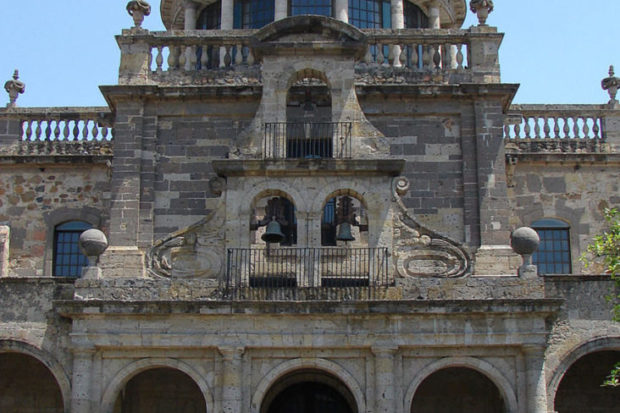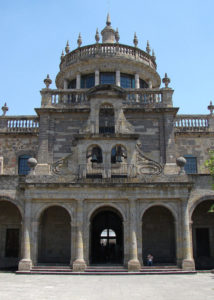
By Alfonso C. Hernandez

A colleague asked me if I was going to Mexico for Christmas vacation, and when I answered him affirmatively he said that he would never go back to visit the city he was born in because of the murders caused by gangs and drug lords. Ironically, on that precise day, children were killed in Newtown, Conn. Some of us who do not fear visiting Mexico have still found a safe and highly cultural country.
In Guadalajara, Jalisco, at the Cabanas Cultural Institute, an example of neoclassical architecture in Mexico, one can appreciate the most important mural production of Jose Clemente Orozco, perhaps the greatest painter in the country, who had a symbolic view of history and human reality. On this vacation, the Institute offered us three world-class exhibits.
First, the Modern Mexican Art collection of Andrés Blaisten, which contains the most complete history of painting from early 20th century Mexico. Practically all the painting styles of the last century are represented including realism, metaphysical symbolism, expressionism, fauvism, surrealism and abstraction in works by Orozco, Siqueiros, Rivera, Tamayo, Juan Soriano, Dr. Atl, Saturnino Herran, Jean Charlot, Fermin Revueltas, Maria Izquierdo and others. Each of the paintings in this exhibit can be considered a masterpiece.
The collection of John and Marie Plakos of the work of another great Mexican painter, Roberto Montenegro Nervo, donated to the Blaisten collection of Modern Mexican Art, was just across a well-tended rose garden. This collection consists of 103 oil paintings, drawings and graphics showing Montenegro’s evolution from symbolism and surrealism to social criticism and abstraction.
In another area of the Institute, we visited several rooms with the most complete exhibit of the literary work of Nicanor Parra, a great poet from Chile. Here, one could appreciate original copies of Parra’s extensive creation. In several areas, one could see and hear the poet reading his poetry, lecturing on poetry or on his political ideas. Parra experimented with language, form and content, becoming an inspiration for poets all over the world including the American Beat writers. Two collections are specially significant: Poems and Antipoems (1954) and Artifacts (1972). We saw him reading his Manifesto and Soliloquy of the Individual. The former is an Ars Poetica and the latter is the return of the poet to his essence.
At the Carmen Exconvent, we saw a complete exhibit of the works of Lucia Maya, a contemporary artist born in California but now living in Mexico. Maya, a surrealist artist, paints her dreams and her vision of the condition of women. Many of her hypnotic sculptures, lithographs and giant doll paintings defy analysis.
Traditionally, the Philharmonic of Jalisco gives two concerts at the end of the year: on Dec. 30, a free concert for an audience of several thousand people seated in front of the Degollado Theater, and on Dec. 31, a paid concert with the same music inside the theater. This year, both concerts were inside under the direction of guest conductor Leslie Dunner, who chose to play mostly music by R. Strauss and J. Strauss Jr.
In Guadalajara, the people I know are highly interested in what happens in the United States. Some expected me to explain the American obsession with the date Dec. 21 being the end of the world. In Mexico, my friends knew that it was simply an astronomical fact of recurrent alignment of the planet Jupiter. Also, they wanted an explanation for the Newtown massacre as they believe that anyone can walk into a school carrying lethal firearms. Worst of all, they wanted me to comment on the crazy idea of arming teachers in schools.
*****
Alfonso C. Hernandez is a writer and poet from Three Rivers, Calif. Contact him at alfonsochernandez@hotmail.com.
